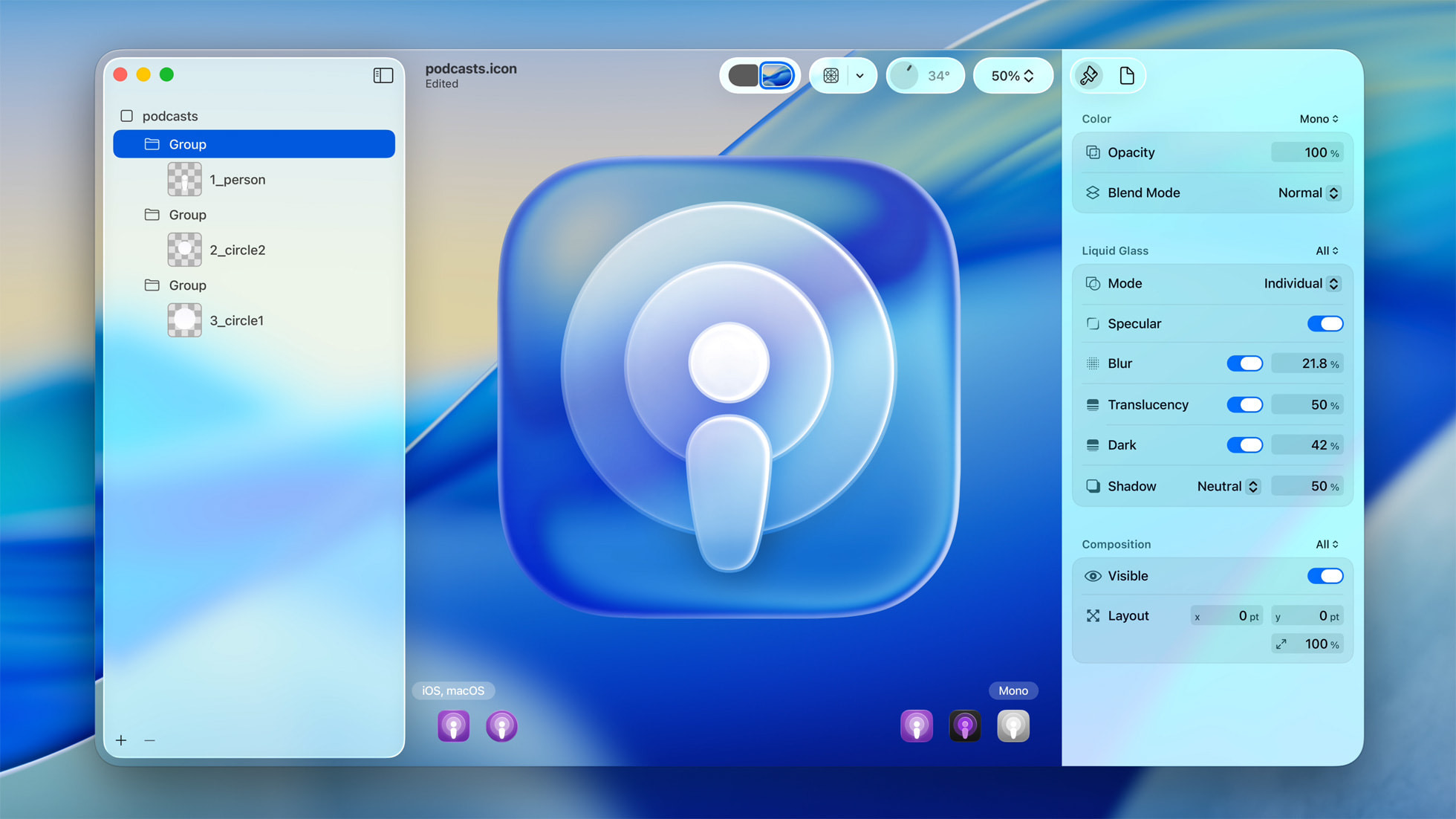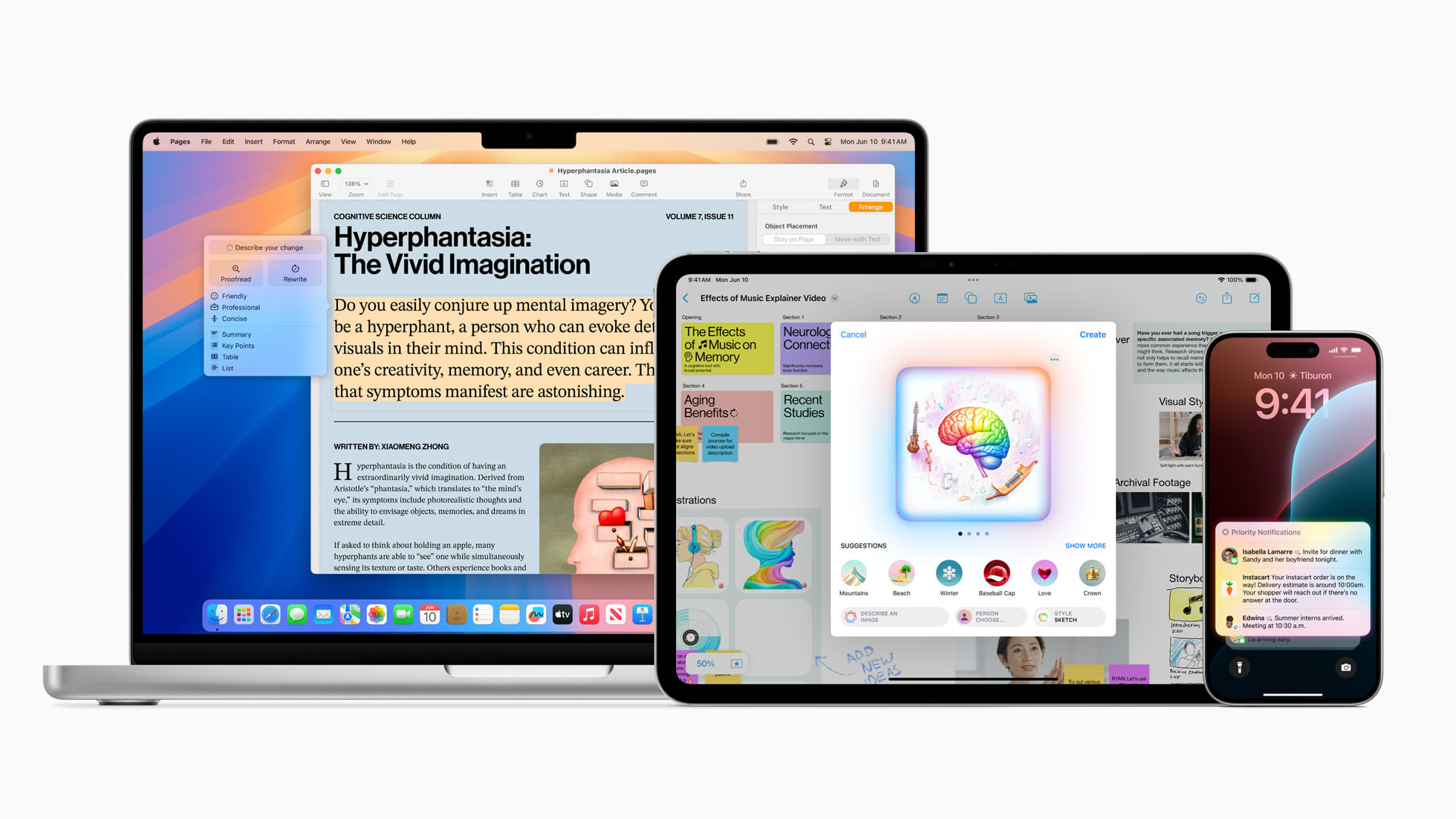13 June 2025
At WWDC 2025, Apple introduced two initiatives that will directly impact your app development plans: the Liquid Glass design language and the Foundation Models API powering on‑device AI under Apple Intelligence. Here’s what these changes mean for your app and how Vioside can help you adapt.

Liquid Glass was announced at WWDC 2025, and it brings a glass‑like, translucent interface to iOS 26, iPadOS 26, macOS 26 (Tahoe), watchOS 26, tvOS 26, and visionOS 26. It dynamically reacts to light and context, refracting the content underneath and reflecting its surroundings. Apple’s Human Interface Guidelines and native UI frameworks (SwiftUI, UIKit, AppKit) now include APIs to build with this translucent, layered aesthetic.
Over the year, this interface will roll out to public devices with full release expected in September alongside new hardware. During this time, app developers should plan to refresh designs to accommodate blur, fluid layering, and dynamic lighting effects. If your app currently uses custom UI, swapping to Liquid Glass‑compatible components may require design and code updates.
From our tests, in the case of apps developed natively, we can see that components that are custom will remain custom, and components that haven't been customised will automatically have the new liquid glass applied. Therefore we can discuss strategy here. If your aim is to keep the app looking custom and different from liquid glass, we can attempt to make some fixes to the app to keep this custom design. If on the other hand you want to give the tailored liquid glass experience that is the new standard for iOS, then some work needs to be done.
To apply these changes, there are different routes that need to be taken according to which framework your app was built with: new apps developed with SwiftUI or older apps developed with UIKit.
SwiftUI apps are well positioned. Apple introduced modifiers that seamlessly replace existing backgrounds and panels. To adopt Liquid Glass, we would need to:
Most iOS views will adopt the effect automatically, but reviewing readability and contrast will ensure your UI remains polished.
UIKit apps require more effort:
Because UIKit changes are more involved, this is a good moment to consider redesigning the front-end completely. UI logic and app architecture remain unchanged. A modern rewrite and migration to SwiftUI could simplify maintenance and elevate the user experience.
With iOS 26, Apple introduces updated app icon requirements to align with the Liquid Glass aesthetic. Icons now support multiple visual states—layered glass, tinted themes, and even a fully clear “ghost” option. To produce compliant icons, Apple released the Icon Composer tool, which lets designers import icon assets, preview the glass effect in light and dark modes, and export ready-to-use layers for all platforms.
Liquid Glass arrives with iOS 26 (public beta July, final release September 2025). Apps compiled with Xcode 26 automatically adopt the new design. However, developers can temporarily delay the change by enabling the UIDesignRequiresCompatibility flag in their Info.plist. This opt‑out works in Xcode 26 but will be removed in Xcode 27, and Liquid Glass becomes mandatory by iOS 27. For UIKit apps, this same flag applies to all UI components; opting out delays the redesign this year but not beyond the next Xcode cycle.
Both SwiftUI and UIKit apps should review updated Apple Human Interface Guidelines and design resources to ensure quality and compliance. Support for older devices (pre-A13) including iPhone XS and prior are dropped, so check your minimum deployment targets.
Moving forward, we would work to finalise UI updates and testing through 2025, prepare for mandatory adoption when Xcode 27 arrives next year, and schedule app releases accordingly. Opting out this year is acceptable but should only be a temporary measure.
Flutter-based apps will not support Apple’s new Liquid Glass design. While Flutter provides Cupertino-styled widgets, these do not reflect the new translucent design language introduced in iOS 26. Apple’s Liquid Glass relies on system-level rendering and blur effects that are not accessible from Flutter’s rendering engine, which is based on Skia. As of now, there are no official plans from the Flutter team to support Liquid Glass, and community workarounds cannot replicate the full experience. For clients using Flutter who want their apps to reflect the new visual standard on iOS, the only viable path is to move to a native front-end built with SwiftUI or UIKit. This ensures full compatibility with Apple’s design system and keeps the app visually consistent with other modern iOS apps. If matching the new interface is important to your brand or product experience, we recommend starting to plan a native front-end transition.

At WWDC, Apple announced a privacy‑focused on‑device AI under with Apple Intelligence. Developer can leverage their framework, a Swift‑only API that brings large language model functionality directly into apps without needing internet or cloud services. Tasks like summarisation, suggestions, text generation, and structured outputs are now possible on‑device. These features maintain user privacy, and cost nothing per request.
With the introduction of the Liquid Glass design system and on-device Apple Intelligence, Apple is shifting the standard for how apps look and behave across its platforms. For apps built using SwiftUI, the transition is relatively straightforward. For those built on UIKit or Flutter, more substantial updates, or even a redesign, may be needed to stay aligned with the new direction. While adopting the new UI is optional for now, it will become mandatory with next year’s platform updates. If you’re unsure how these changes affect your app, or would like to plan a roadmap to stay current, reach out to us. We’re here to guide you through what needs to be done and help you prepare a clear way forward.
Latest Blog Posts //